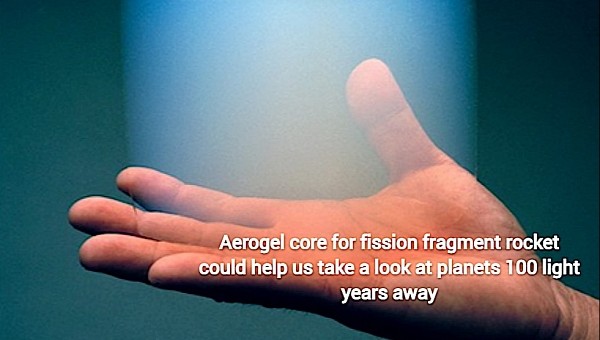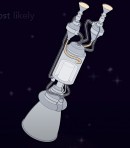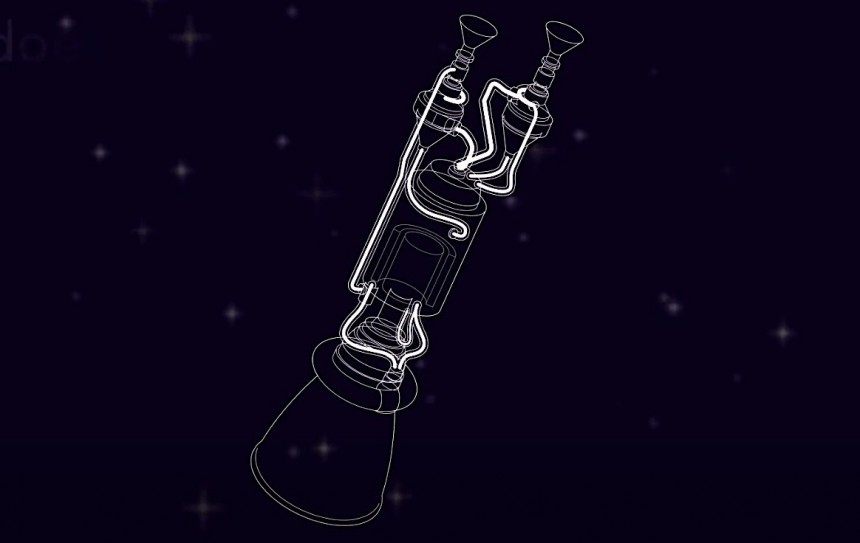If you ask some people, humanity has more than proven its worth as a space-faring species. In a few short decades, we’ve gone from flying piston aircraft in our own atmosphere to sending people and hardware to other worlds, in a bid to find more clues about our origins, but also the answer to the question that haunts us all: are we alone?
But that's when looking at things from down here. On a galactic level, we've only begun to scratch the surface of what's possible, and no matter how many milestones we’ve reached with our space exploration technology, a lot more of them lie ahead. We’re yet to build a true outpost on another world, we’re far from finding ways of keeping astronauts perfectly safe during long voyages through the vastness of space, and, more importantly, we’re yet to discover a means of propulsion capable of opening up nearby star systems within a decent time frame, one that would not require generation ships to reach.
Ideas on any of the above topics, and much more, are aplenty, but very few of them have a chance of ever becoming a reality. Yet NASA has a nose for picking the best ones from this massive crowd of thoughts. It does so through a program called Innovative Advanced Concepts (NIAC), which this year recognized no less than 14 concepts as potentially relevant for the space industry, and awarded them various grants.
We’ve burned through 13 of them since the grants were awarded back in January, and here we are now at the end of the list, with one of the most interesting projects, something called aerogel core fission fragment rocket engine (aerogel core FFRE).
One of the ways currently being researched to get spaceships moving is by using nuclear thermal propulsion (NTP). Such a design calls for the heat produced by a nuclear reaction (read fission) to be used to generate thrust. This is done by means of working fluid (most often, liquid hydrogen) getting heated to a high temperature, expanded, and expelled through a nozzle.
NASA has been looking at this way of doing things for the past six decades or so. It does so because NTPs promise to at least double the efficiency of chemical rockets currently in use, opening the doors to crewed missions to Mars and perhaps even beyond.
In February 2021, the space agency really got things moving by launching a request for proposals for an NTP design and outlined some of the main characteristics it needs from such a rocket. And a key element is high temperature required for the concept to work.
More precisely, NASA needs such a rocket and its components to be able to withstand temperatures above 4,600 degrees Fahrenheit (2,538 Celsius). That’s not something impossible to achieve, but it raises limitations when it comes to the engine’s efficiency.
A typical NTP now being researched comes with a specific impulse of between 900 and 7,000 seconds. The specific impulse is the thrust resulting from a specific amount of fuel, and here it is significantly higher than the 450 seconds of a standard chemical rocket.
During this year’s NIAC program, someone proposed a type of nuclear thermal propulsion capable of reaching a specific impulse of 4,000 seconds. We discussed the idea back in January, and it may appear huge by today’s standards, but it’s nothing compared to what the aerogel core FFRE promises.
Today's idea belongs to a researcher from Positron Dynamics, a company that describes itself as the builder of a rocket 1,000 times faster than anything we now have at our disposal. That would be an antimatter machine that will be a topic of later coverage here on autoevolution.
For today, we focus on the FFRE imagined by Ryan Weed, who also happens to be the company’s CEO. His FFRE promises, at least on paper, a specific impulse of over 100,000 seconds, coming from a package much smaller than other similar ideas.
Instead of using a working fluid to generate thrust, this FFRE will use a low-density aerogel paired with a magnetic field. Fuel particles coming from the reactor would embed themselves in this material through a process that was not fully explained, and be kept contained and on the desired trajectories by the magnetic field. Particles would then be let go to be used as rocket exhaust for propulsion, but also as electric power for the spacecraft.
After receiving the NIAC grant, Weed said he’d try and design a “small prototype low-density nuclear reactor core.” Separately, a distinct study into a specific exoplanet observation mission will be conducted. It would require a telescope spacecraft to be placed at enough distance from our planet to use solar gravitational lensing for observation purposes. That would be some 550 astronomical units away (one astronomical unit is 93 million miles/150 million km), a point which the telescope should reach in about 15 years. From there, it could put exoplanets located as far as 100 light years within viewing distance.
Like all other NIAC concepts, this one too is in its early stages, and there’s no telling whether it will ever become a reality. Yet, the prospect of being able to cover huge distances during a single lifetime is enticing and something we should definitely strive to achieve if we are to ever become a galactic civilization.
Ideas on any of the above topics, and much more, are aplenty, but very few of them have a chance of ever becoming a reality. Yet NASA has a nose for picking the best ones from this massive crowd of thoughts. It does so through a program called Innovative Advanced Concepts (NIAC), which this year recognized no less than 14 concepts as potentially relevant for the space industry, and awarded them various grants.
We’ve burned through 13 of them since the grants were awarded back in January, and here we are now at the end of the list, with one of the most interesting projects, something called aerogel core fission fragment rocket engine (aerogel core FFRE).
NASA has been looking at this way of doing things for the past six decades or so. It does so because NTPs promise to at least double the efficiency of chemical rockets currently in use, opening the doors to crewed missions to Mars and perhaps even beyond.
In February 2021, the space agency really got things moving by launching a request for proposals for an NTP design and outlined some of the main characteristics it needs from such a rocket. And a key element is high temperature required for the concept to work.
More precisely, NASA needs such a rocket and its components to be able to withstand temperatures above 4,600 degrees Fahrenheit (2,538 Celsius). That’s not something impossible to achieve, but it raises limitations when it comes to the engine’s efficiency.
During this year’s NIAC program, someone proposed a type of nuclear thermal propulsion capable of reaching a specific impulse of 4,000 seconds. We discussed the idea back in January, and it may appear huge by today’s standards, but it’s nothing compared to what the aerogel core FFRE promises.
Today's idea belongs to a researcher from Positron Dynamics, a company that describes itself as the builder of a rocket 1,000 times faster than anything we now have at our disposal. That would be an antimatter machine that will be a topic of later coverage here on autoevolution.
For today, we focus on the FFRE imagined by Ryan Weed, who also happens to be the company’s CEO. His FFRE promises, at least on paper, a specific impulse of over 100,000 seconds, coming from a package much smaller than other similar ideas.
Instead of using a working fluid to generate thrust, this FFRE will use a low-density aerogel paired with a magnetic field. Fuel particles coming from the reactor would embed themselves in this material through a process that was not fully explained, and be kept contained and on the desired trajectories by the magnetic field. Particles would then be let go to be used as rocket exhaust for propulsion, but also as electric power for the spacecraft.
Like all other NIAC concepts, this one too is in its early stages, and there’s no telling whether it will ever become a reality. Yet, the prospect of being able to cover huge distances during a single lifetime is enticing and something we should definitely strive to achieve if we are to ever become a galactic civilization.








